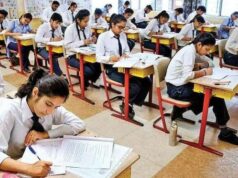By
Colonel Awadhesh Kumar, Special Forces Veteran
On 13 April 2016, an article on reorganisation of ECHS (Ex Servicemen Contributory Health Scheme)…was published on the pages of JAGRUK BHARAT and was dutifully tagged to Shri Manohar Parrikar. The last paragraph of the article is quoted as under:-
The recommended Action Plan to Shri Parrikar is :
- Re organise all Polyclinics on the lines recommended for Type C.
- Upgrade Polyclinics from Type E to D, D to C, C to B and Type B to A wherever required, depending on the strength of Ex Servicemen registered.
- Identify 25 Major Military Stations (as per strength of ESM) and establish ECHS Hospitals alongside existing Military Hospitals.
- Empower DG ECHS to the full extent of Administrative and Financial Powers.
- Appoint a serving military officer as Joint Secretary, Ex Servicemen Welfare Department.
- Whether Shri Parrikar even read the above Article or not is now immaterial because in the first week of May 2016, there was a very heartening news for the ESM fraternity. Action got initiated on Point No 2 stated above and work started on point number3. In near future a sizeable 97 number of identified Polyclinics are going to be upgraded. Also as recommended at para 11 of the Article, the Basic Pay of the Supporting Staff of ECHS has been increased by nearly 50%. With just two such news, ESM all over were so happy that an old Veteran from the South remarked “Parrikar is faster than Quick Gun Murugan “. ESMs from the affected Polyclinics are full of praise for the Raksha Mantri. In fact RM bagged two birds with a single shot….gratitude for himself and vote for his Party…. by ordering and ensuring implementation of all the given points in the above Action Plan before mid-2017.
It so happened that many of the Polyclinics to be upgraded are located in Uttar Pradesh which has a very large ESM population… nearly 25 lakhs including dependents. Thank you notes from these ESM and their dependents came to the RM, and his Party for the good work done, through the ballot boxes which were used all over the State of UP sometime in 2017.
While Military Hospitals look after a soldier during his Service ranging from 15 years (for a Jawan) to 40 years (for the Chief), it is the ECHS which will look after them as Veterans for a further period ranging from say 18 years to 45 years. With increase in Life Expectancy the dependency on ECHS will keep increasing. Due to faulty and ostrich like Policy of the successive Governments, the matter of OROP…one rank one pension.., had started widening the distrust between the Military and the Civil bureaucracy to such an extent that one day it would have exploded or imploded, either way destroying our democratic structure.
However before this Tumour of Distrust could become malignant, Manohar Parrikar was able to zap it with the Radiation of his clear cut Decisions. We hope that any remaining ” cancerous distrust” gets totally eradicated by the Therapy to be prescribed by Justice Reddy…one man commission on OROP. Now all Stakeholders.. the Elected Governing Leaders, the Military’s Leaders and the Civil bureaucratic hierarchy must start paying equal attention to all matters pertaining to ECHS. In times to come this is going to be more important than even OROP.
The OROP battle was FOR IZZAT, the ECHS modernisation and re organisation is for a healthy dignified living that is WITH IZZAT. As it is, Department of ESW, MoD, Govt of India, proudly proclaims that Aim of ECHS is to provide QUALITY HEALTHCARE to ESM. Therefor this is what must be ensured at all levels, starting from the top most. For Quality Health Care, following have to be ensured:
- Continuous Futuristic Planning for Medical/Infrastructural/Administrative/Financial up gradation
- Adequate Budgetary Support
- Full Administrative and Financial Empowerment of MD ECHS.
- Reorganisation of Department of ESW.
- Required Delegation of Financial and Administrative Powers right down to OIC, Polyclinics. OIC ECHS to be a member of staff selection Committee.
- Modern, Redesigned Building Infrastructure to cater for the minimum number of anticipated daily patients visiting each Type of Polyclinics.
- Provisioning of Modern medical equipment and facilities for Outpatient Care including Consultation and essential Investigation.
- Provisioning and Stocking of best possible medicines.
- Re-evaluation of Staffing Norms (Medical, Para medical, Administrative and Supporting) for each Type of Polyclinic to ensure QUALITY SERVICE. This has to be based on minimum anticipated number of patients visiting daily.
- Provisioning of intercom facilities connecting Reception, Pharmacy, Specialists, Medical Officers, Dental officers and Pathology Lab to OIC Polyclinic.
- Proper working facilities for the ECHS Staff.
- Improvement in Service Conditions of non ESM contractual employees by providing Employee Provident Fund, insurance etc. Use and discard policy will be detrimental to ECHS as an institution.
- Institutionalized provisioning of vehicles for visit to Empanelled Hospitals.
Next, let’s examine the thing which matters the most for the ESM.. the Polyclinics. Types are A, B, C, D and E which caters for ESM strength of 20000+, 15000+, 10000+, 5000+ and 800+ respectively. Now each Veteran, spouse, two children and two parents total six. However for planning purpose we will take an average figure of just THREE. Thus minimum dependency on each Type of Polyclinic will be 80000, 60000, 40000, 20000 and 3200.
Out of this dependency state, keeping to the lowest, the daily expected number of patients at each Type of Polyclinic comes to 800 for Type A, 600 for Type B, 400 for Type C, 200 for Type D and 32 for Type E.
The Staffing Norms must ensure that a Patient spends less than 15 minutes at Reception for Registration, his waiting period to see the Doctor should again be less than 15 minutes. Next it must be ensured that he is able to get his medicine, if any in less than 20 minutes. Also there is a requirement for a few Counsellors, to explain various procedures including investigation/consultation/admissions at the empanelled hospitals. To ensure QUALITY MEDICAL CARE, a Medical Officer should handle a maximum of 70 patients per day, during the given Timings 0800h to 1400h(with 30 minutes break) Similarly a Specialist should be restricted to 40 patients per day.
Keeping all the above in mind, the Staff authorised to a Type A Polyclinic needs to be revised (and similarly for other Types too), as the present staffing pattern is simply a mockery of the ESM and we all know who are responsible for this state of affairs. A Type A Polyclinic implies 800 patients per day. Thus for planning we take 130 patients per hour. This again implies minimum 04 Registration Counters and a waiting hall to sit at least 100 people with rest standing at the counters.
There will also be a requirement of 04 Windows for medicine distribution. Finally we come to the administrative part. ECHS establishment too requires it own administration and maintenance for which presently no staff is authorised whatsoever and in spite of this the System demands that ECHS should function like a military unit. Thus recommended staff is as under:
|
STAFF |
RECOMMENDED |
EXISTING |
||||||||
| Type A | Type B | Type C | Type D | Type E | Type A | Type B | Type C | Type D | Type E | |
| Officer-In-Charge | 1 | 1 | 1 | 1 | 1 | 1 | 1 | 1 | 1 | – |
| Specialists | 7
(Med-2,Surg-1, Neuro Physician 1, Ortho-1, Gynae-1, Eye-1) |
4
(Med-2 Ortho-1 Neuro Physician-1) |
2
(Med-1 Neuro Physician-1) |
1(Med) | – | Med2
Gane1 |
Med 1 Gyane 1 | Med1 | – | – |
| Medical Officers | 14 | 9 | 6 | 3 | 1 | 6 | 4 | 3 | 2 | 1 |
| Dental Officer | 3 | 2 | 1 | 1 | – | 2 | 2 | 1 | 1 | – |
| Radiologist | 1 | 1 | 1 | – | – | 1 | 1 | – | – | – |
| Establishment Offr…..JCO | 1 | 1 | – | – | – | – | – | – | – | – |
| Physiotherapist | 2 | 2 | 1 | – | – | 1 | 1 | 1 | – | – |
| Radiographer | 1 | 1 | 1 | – | – | 1 | 1 | 1 | – | |
| Lab Tech | 3 | 2 | 1 | 1 | – | 1 | 1 | 1 | 1 | – |
| Dental Hygn | 3 | 2 | 1 | 1 | 1 | 1 | 1 | 1 | – | |
| Dental Asst | 3 | 2 | 1 | 1 | – | 1 | 1 | – | – | – |
| Dental Mech | 1 | 1 | 1 | 1 | – | 1 | 1 | – | – | – |
| Lab Asst | 3 | 2 | 1 | 1 | – | 1 | 1 | 1 | 1 | – |
| Pharmacist | 4 | 3 | 2 | 1 | – | 3 | 2 | 2 | 1 | – |
| Nur Asst | 9 | 6 | 3 | 2 | – | 5 | 4 | 2 | 2 | 1 |
| Computer Tech | 1 | 1 | 1 | – | – | 1 | 1 | 1 | 1 | – |
| SKT (Medicine) | 3 | 2 | 1 | – | – | – | – | – | – | – |
| Driver | 3 | 2 | 2 | 1 | 1 | 2 | 2 | 2 | 2 | 1 |
| Chowkidar | 3 | 2 | 2 | 1 | 1 | 1 | 1 | 1 | 1 | 1 |
| Female Attendant | 4 | 3 | 2 | 1 | 1 | 2 | 2 | 1 | 1 | – |
| Receptionist | 4 | 3 | 2 | 1 | 1 | 2 | 2 | 1 | 1 | – |
| Data Entry Operator | 2 | 2 | 1 | 1 | 1 | 1 | 1 | 1 | 1 | – |
| Counsellor | 4 (1xFemale) | 3 (1xFemale) | 2(1xM) (1xF) | 1 | 1 | – | – | – | – | – |
| Establishment Supervisor | 1 | 1 | 1 | 1 | 1 | – | – | – | – | – |
| Office Clerk | 4 | 3 | 2 | 1 | 1 | 2 | 2 | 1 | 1 | |
| Peon | 2 | 1 | 1 | 1 | 1 | 1 | 1 | 1 | 1 | |
| Storeman | 2 | 2 | 1 | 1 | 1 | 2 | 1 | 1 | 1 | 1 |
| Safaiwala | 4 | 3 | 2 | 1 | 1 | 2 | 2 | 1 | 1 | 1 |
| General Duty | 2 | 2 | 1 | 1 | – | – | – | – | – | – |
Along with proper Staffing there has to be proper infrastructure. The existing authorisation of space for each activity within the ECHS from Reception to Exit, office space for each of the Staff member as per his work, storage space for monthly/quarterly stock of medicine, medical equipment, office equipment and accountable and auditable documents, all have to be catered for. The building design and layout needs to be redone. It has to be modern, clutter free, user friendly and aesthetic too. Provisioning of adequate number of toilets and parking space for the visiting patients and the ECHS staff too have to be planned in a proper manner and not as after thoughts. It has been learnt that recently the authorisation of total plinth area for each type of Polyclinic has been increased. Now the designing and new construction must follow.
The administration at the Polyclinic level also needs a relook. Financial Powers of the OIC needs to be increased. He should be a member of the Staff Selection Committee. The polyclinic should not be treated like a military unit. Accounting Norms, Auditing norms, leave regulations etc have to be tailor made, as Army templates cannot be cut and pasted. There will always be a few pure civilian employees in the ECHS. They will have to be given all the benefits as authorised to a civilian on contractual job by the Central Govt norms. As use and discard policy will be detrimental to ECHS as an Institution of Excellence.
- In the end, we come to the reorganisation of the Department of Ex Servicemen Welfare itself. Today’s Serving Personnel are tomorrow’s Veterans. Therefore Service Personnel and Veterans are best suited to the job of resolving the problems faced by the Veterans. Also unlike civil, Veteran are well below 60 years of age when they retire. Thus the Deptt needs to have a suitable mix of civil personnel, serving military personnel and veterans.Of course the attached offices of DG Resettlement, MD ECHS and Kendriya Sainik Board are headed by Service Officers but their subordinate staff too should be a mix of Civilians and ESM. Recommended structure of Deptt of ESW is as under:
- Secretary Deptt of ESW – Civil Services (AIS or Gp A)
- Jt Secy – Serving Military Officer
- Dir/Dy Secy (Res I) – Civil Services
- Dir/Dy Secy (Res II) – Re Employed Military Officer (Col/Lt Col)
- Dir/Dy Secy (Pen I) – Re Employed Military Officer (Col/Lt Col)
- Dir/Dy Secy (Pen II) – Re Employed Military Officer (Col/Lt Col)
- US (Res I) – Civil Services
- US (WE) – Civil Services
- US (Res II) – Civil Services
- US (I&C) – Servicing Military Officer (Major)
- US (Pen/Legal) – Civil Services
- US (Pen/Policy) – Serving Military Officer (Major)
- US (Pen/Grievance) – Serving Military Officer (Major)



